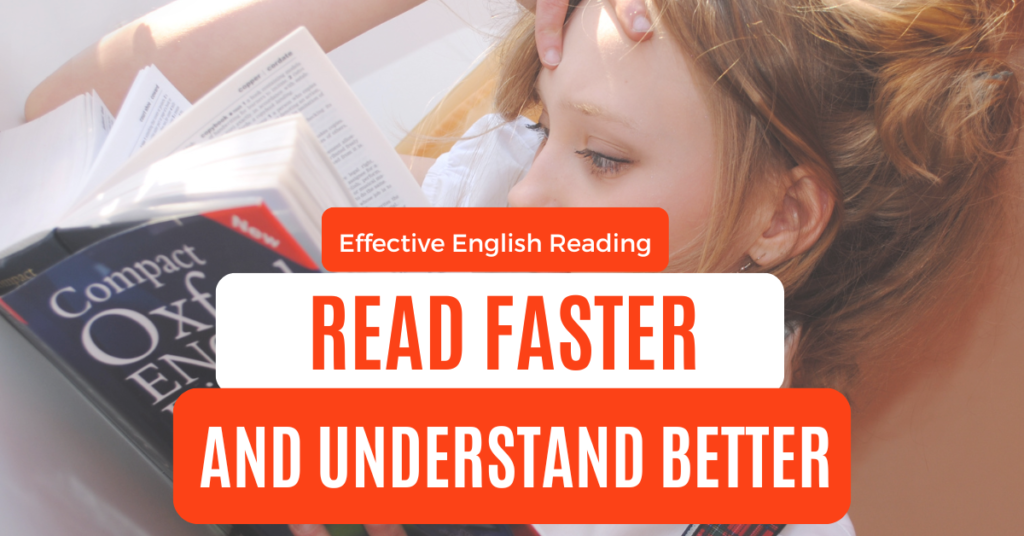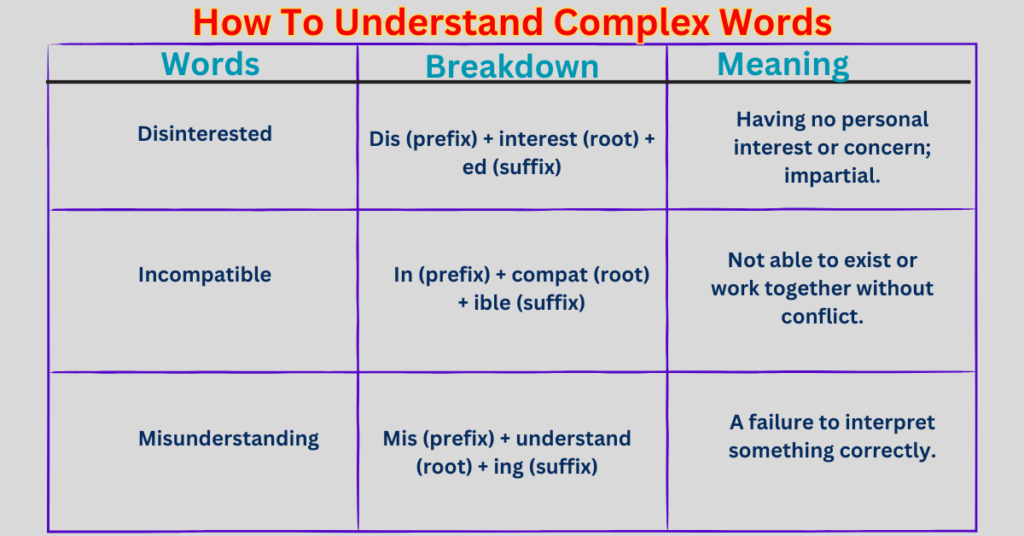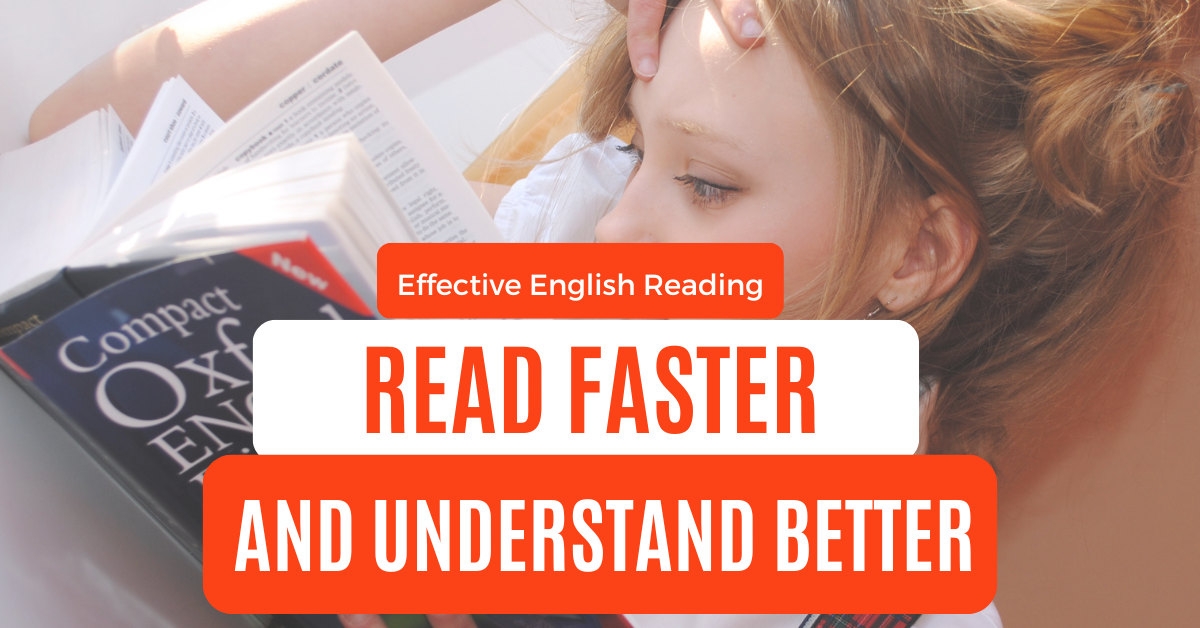Read English Better and Faster: Top Tips for Vocabulary and Understanding

Introduction:
Effective English reading requires skill to understand the content fully. Whether one reads newspapers, books or articles, one should aim at faster reading and deeper understanding of the text. In this blog post, we’ll explore various techniques to improve the speed of reading and better comprehension. Also, we’ll discuss strategies for reading various types of texts and expand your vocabulary to be able to comprehend better.
By the end of this post, you’ll know how to comprehend complex English texts with confidence, how to develop reading habit successfully, and how to make your reading more fruitful.
1. The Importance of Reading in English
Reading is a skill that takes time to develop. This skill is crucial for overall fluency. It helps in developing vocabulary base. Additionally, the ability to understand sentence structure, grammar and nuances of language develop as you practice reading.
In India, almost all competitive exams include some questions based on effective reading such as IELTS, TOEFL, and the civil services. Also, reading skills are vital to understand official documents, academic papers, or even instructions on products and services.
2. Techniques for Improving Reading Speed
You must make efforts continuously and have dedication in order to hone reading skills. Here are several methods to help you increase your reading speed and improve comprehension at the same time.
a. Skimming
Looking through the text to have an overall idea of the test is known as skimming. When you study articles or newspapers, this technique can be helpful in knowing the main idea without having to read the whole text.
Example: When reading a news article, focus on the headline, subheadings, and the first sentence of each paragraph to get to the main points.
b. Scanning
Scanning is about looking for specific information without reading every word of the text. In this technique you quickly glance through all parts of the text to get to the point you wish to know about. For instance, if you’re looking for a particular figure or fact, you scan the text for that detail.
Example: While reading a cricket match report, you might scan for the player scores and important moments, skipping other details which are not that important for you.
c. Chunking Words
Science has proven that our brain can process groups of words faster than each word individually. Therefore, you must learn to read group or chunk of words to increase your reading speed. This not only reduces the reading time but also improves comprehension.
Example: Instead of reading “The boy went to the market,” try seeing it as a single phrase “The boy went to the market” in one glance.
d. Avoid Subvocalization
Many people have the habit of saying the words in their mind while reading. This is called subvocalization. This consumes a lot of physical energy and focus. One must train one’s mind to identify the words without pronouncing them in their minds. This requires a lot of practice and determination.
e. Use a Pointer or Your Finger
To make the activity of reading easy you should use your finger or a pen to guide your eyes as you read words. This helps in reducing mistakes and improves focus and comprehension.
f. Set a Timer
To increase your reading speed, a good strategy can be to time yourself for short paragraphs and then keep increasing the length of the text, as you gain confidence. While doing this, make sure that you comprehend the text well.
Example: If you want to improve your reading of English articles, read a 500-word article in 10 minutes and then slowly reduce the time.
3. Techniques for Improving Comprehension
Below given are some techniques for better comprehension while reading speedily.
a. Preview the Text
It is wise to preview the text before diving into any book or article. For this purpose one can read headings, subheadings, bold or italicized words. This way, it becomes easy to decide whether you should invest your time and energy in reading that text or not.
Example: When reading an English newspaper like The Times of India, quickly look at the headlines and section titles to identify the main topics before reading the entire article.
b. Summarize as You Go
If you can get into the habit of mentally summarizing each paragraph after reading, it will strengthen your understanding and your retention of that information will also be better.
Example : If you’re reading an article on economic situation in India, summarize each section as you go.
c. Ask Questions
Asking questions on the text can help understanding the text better. What is the main idea? What evidence supports the argument? Why did the author write this? Such questions improve critical thinking skills. Additionally, you retain the information longer by asking questions.
d. Visualize the Information
Visualizing what you read is an excellent strategy for improving understanding whether it’s a story, article, or an instructional manual. Through visualization mental images should be created having details of the text. This way, the information goes deep down in the memory and you remember it longer.
Example: When reading a novel, picture the characters, the situations and the actions.
e. Look for Key Points and Arguments
It is not worthwhile to get all the details while reading articles or books. Instead knowing main points and supporting arguments should be understood well. Understanding this much is helpful in grasping the overall message from the text.
Example: In a magazine article about climate change, the key points might be the causes of global warming and its effects on weather patterns.
4. How to Read English Newspapers, Books, and Articles
You must adopt different reading approaches depending on the type of text one reads. Below are some ways to effectively read newspapers, books, and articles in English.
a. Reading English Newspapers
English newspapers are particularly helpful in improving reading and updating on current events.
- Start with Headlines: Read headline first and then decide if it is worth reading the complete article or news.
- Summarize the Main Points: For better understanding and retention summarize the main points using “5 Ws and H”—who, what, where, when, why, and how.
- Skim for Key Information: Skim through paragraphs to get the main ideas.
- Pay Attention to Editorials: Special attention should be paid to editorials as they provide author’s viewpoints as well as facts.
Example: If you’re reading The Hindu, focus on the political section and read the main news about government policies. Editorials in this newspaper are particularly useful for improving comprehension of formal English.
b. Reading English Books
The style of reading English books is different from that of reading newspapers. Here’s how to read them:
- Choose the Right Genre: It’s vital to know your English level and choose the book of right genre. This ensures enjoyment and better grasping of the content.
- Take Notes: Highlight or note down new words, phrases, and ideas.
- Analyze Character Development and Plot: In novels, you should be able to analyze how the plot was developed and how characters evolved through the story.
Example: When reading a book like The God of Small Things by Arundhati Roy, pay attention to how the author describes Kerala’s landscape and the emotions of the characters.
c. Reading English Articles
For articles, whether academic or casual, use a structured approach:
- Identify the Thesis or Main Idea: In order to get to the main idea, read the first few sentences.
- Pay Attention to Paragraph Structure: Analyze what purpose each paragraph serves to understand the flow of ideas.
- Summarize After Reading: Once you finish reading the article, try summarizing the main points.
Example: If you’re reading an article about startup culture in India, focus on how the author supports claims about the challenges faced by young entrepreneurs.
5. Vocabulary and Context Clues for Better Understanding
Getting familiar with vocabulary is essential in understanding the text. Below are some ways to comprehend the text when there are some unfamiliar words.
a. Use Context Clues
Try to understand the context of that word which you are unfamiliar with. Try guessing its meaning by the words coming before and after that word. Also, understand how that word has been used in the sentence.
Example:
The monsoon rains were torrential, flooding the streets within minutes.
From the word “flooding,” you can guess that “torrential” refers to heavy or intense rain.
b. Break Down Complex Words
Try breaking down complex words by identifying prefixes, suffixes, and root words. This understanding will help in understanding the meaning better.
Example:
The word “unbelievable” can be broken down into un- (not), believe, and -able (capable of), meaning “something that cannot be believed.”

c. Create Vocabulary Lists
While reading, note down new words and create a list. Whenever you come across new words while reading the text, make a list of them and categorize, such as business vocabulary, academic terms, or daily-use phrases. Review the list regularly to strengthen your learning.
d. Use Flashcards
Flashcards are cards having words on one side and its meaning on the other. This can be a great way to memorize new words.
e. Read Extensively
Extensive reading will reduce the vocabulary problem significantly. Use different reading materials to learn variety of vocabulary.
Example: Reading both a business newspaper like The Economic Times and a novel like A Suitable Boy will give you exposure to a wide range of vocabulary.
6. Common Mistakes to Avoid While Reading in English
Many new learners make mistakes while reading in English. They are-
- Reading Every Word: Never should one focus on every word while reading. This makes reading tiring and too difficult to comprehend. Focus on overall meaning of sentences and paragraphs.
- Not Taking Breaks: If one reads for too long without taking breaks, comprehension is affected due to fatigue. Therefore, take breaks mindfully.
- Skipping Difficult Sections: Many readers skip the difficult parts of the text. Instead, you should re-read and attempt to understand them the best way you can.
- Relying Too Much on Dictionaries: It is not a good practice to look up each difficult word you come across while reading. By doing this you may lose interest in reading and it slows down the reading speed as well. You should try to guess the meaning by the context. However, you may find the meaning in the dictionary, at a later time.
Conclusion
Effective English reading is an essential skill that requires dedication and effort like any other skill. By using the techniques mentioned in this blog one can achieve speed in reading, better comprehension and can expand one’s vocabulary.
Start with easy texts and slowly increase the difficulty level. Reading skills help you in every stage of life. Also, focus on expanding vocabulary for better comprehension. Happy reading!
Share your thoughts:
Which reading technique do you use? Share your thoughts in the comment section. Also, don’t forget to subscribe to the blog for more such useful content.

Great write-up, I?¦m normal visitor of one?¦s website, maintain up the excellent operate, and It’s going to be a regular visitor for a lengthy time.
Thanks a lot!
Respect to post author, some fantastic entropy.
Thanks for your comment!
Wow! This can be one particular of the most beneficial blogs We’ve ever arrive across on this subject. Basically Great. I am also a specialist in this topic therefore I can understand your effort.
I?¦m now not positive where you are getting your info, but good topic. I must spend a while finding out much more or figuring out more. Thank you for fantastic info I was searching for this information for my mission.
Thank you!
Some really nice and utilitarian information on this site, too I conceive the pattern has got excellent features.
Will keep bringing more useful stuff here.
Hello, i think that i saw you visited my site thus i came to “return the favor”.I’m attempting to find things to improve my web site!I suppose its ok to use a few of your ideas!!
Well! Honestly, I never visited your site before but, after seeing you comment, I did. I must say you have made a vibrant site. I don’t know much about the area of your expertise but I wish you good luck in your endeavor.
I simply couldn’t leave your web site prior to suggesting that I actually enjoyed the usual information an individual provide to your guests? Is going to be again regularly in order to check out new posts
Thank you for your feedback!
Everything is very open and very clear explanation of issues. was truly information. Your website is very useful. Thanks for sharing.
Thanks for your feedback!
Super-Duper blog! I am loving it!! Will come back again. I am bookmarking your feeds also
Thank you for your positive feedback!
Good web site! I really love how it is simple on my eyes and the data are well written. I’m wondering how I could be notified whenever a new post has been made. I have subscribed to your RSS feed which must do the trick! Have a nice day!
Thank you! If you have subscribed to my site you’ll be notified, for sure.